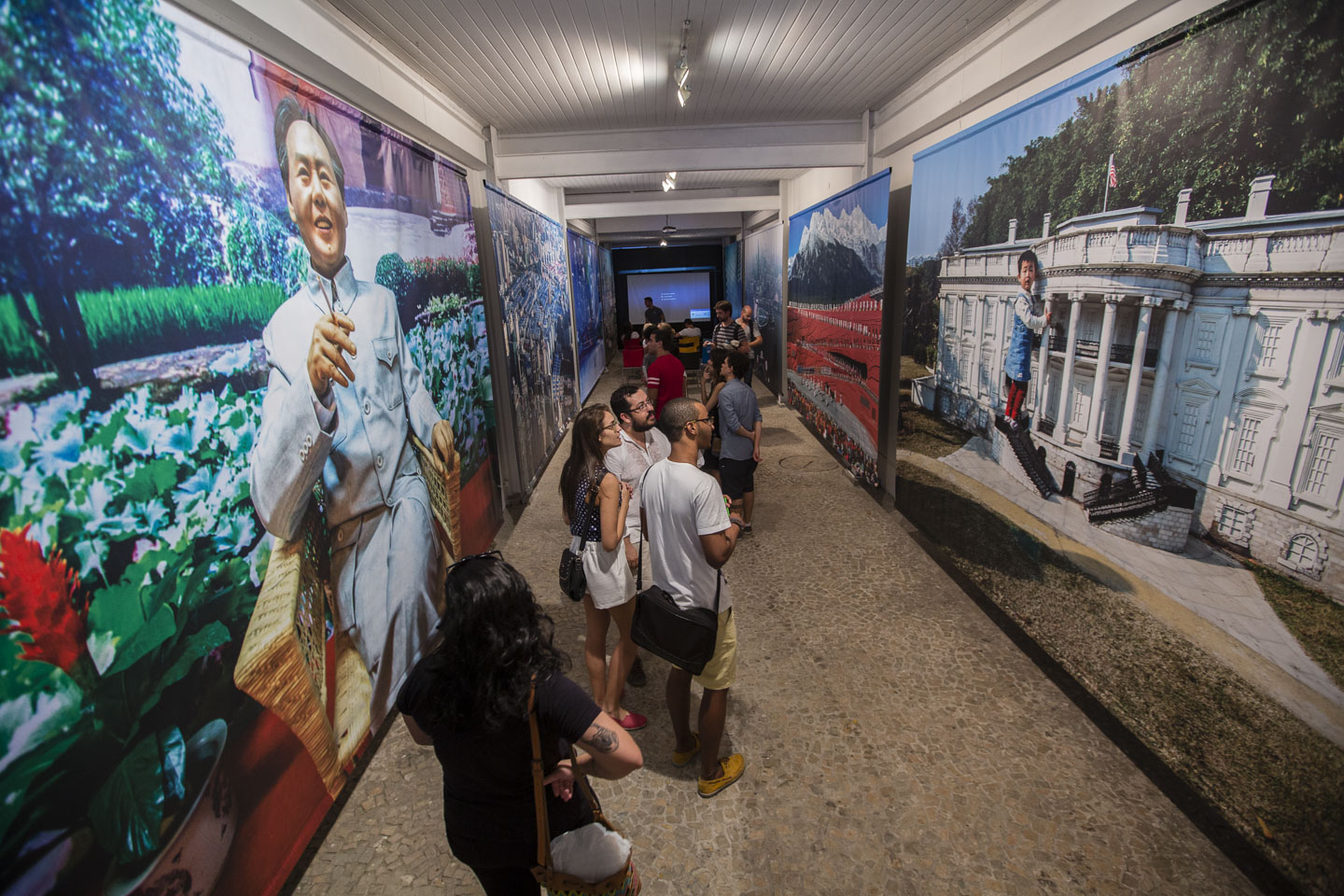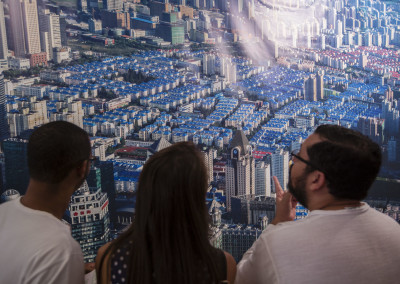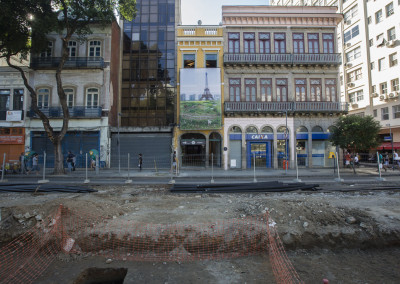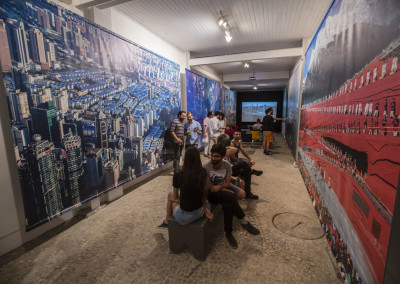
One of the highlights of 2015 was installing large-scale tarp images taken from my Counterfeit Paradises series at Columbia University’s Studio-X in Rio de Janeiro. They even let me put the biggest one, taken from Hangzhou’s mini Paris, on the facade of their historic building. The opening itself also went viral on Facebook, with more than 12,000 people RSVPing to the event. Although that many people did not attend, it showed how much the work resonates in Brazil as they continue to struggle with corruption and propaganda surrounding their own development. Counterfeit Paradises examines the rapid, unrelenting modernization of China’s cities. Despite the pollution, relentless traffic, and corruption accompanying the build-up and expansion of Chinese cities, municipal governments, and developers continue to push short-term private interests over long-term sustainability. Brazil needs just as much critical analysis with regards to their emerging consumer paradigms. Below is the Studio-X Rio de Janeiro description of the exhibition in both Portuguese and English.
PARAÍSOS FALSIFICADOS
“Caso oferecida a escolha entre um bom inferno e um paraíso falsificado, pelo que as pessoas optariam? Qual seja a sua argumentação, muitas vão acreditar que um paraíso falsificado é melhor do que um bom inferno. Mesmo que as pessoas reconheçam que o paraíso é falso num primeiro momento, elas não vão ter a coragem ou se dar ao trabalho de expô-lo desta maneira. Conforme o tempo passar, elas irão esquecer de que ele não é real e vão começar a defendê-lo, insistindo que é o único paraíso existente.” – Chan Koonchung
O grande plano de desenvolvimento da China continua a crescer em ritmo ininterrupto. É inegavelmente a maior infraestrutura construída na história da humanidade. Contudo, muito está em jogo para diminuir o apetite gigantesco desta força econômica, mesmo que as fraturas apareçam através do país. Poluição, trânsito incessante, e corrupção são hoje parte da vida urbana. Paraísos Falsificados explora estas fraturas através das “harmoniosas” cidades e espaços de lazer que surgem por toda a China. Estes lugares estão formatando padrões de consumo em uma grande arquitetura materialista. Mas os adicionais um bilhão de pessoas na China não podem por em prática os mesmos já insustentáveis estilos de vida experimentados nos países mais desenvolvidos. Os recursos limitados do planeta não tem como sustentar. Por hora, os noveau riche Chineses tomam parte em um campo imaginado de contentamento, reafirmando a retórica política sobre as armadilhas de seu frágil estilo de vida moderno. Esta fantasia aparece em muitos lugares: novos e alardeados distritos municipais, sítios históricos comunistas, parques de diversão, instituições culturais, e luxuosos empreendimentos residenciais temáticos. Todos eles servem para sustentar um paradigma de consumo cada vez mais importante para o curto ciclo econômico da China, em detrimento da sustentabilidade no longo prazo. As esperanças e sonhos de muitos estão entrelaçados em empreendimentos espúrios, muitos dos quais, na prática, permanecem subutilizados. Estes terrenos fantasiosos e alienados são os paraísos falsificados da China.
COUNTERFEIT PARADISES
“Given the choice between a good hell and a counterfeit paradise, what will people choose? Whatever you say, many people will believe that a counterfeit paradise has got to be better than a good hell. Though at first they recognize that the paradise is bogus, they either don’t dare or wish to expose it as such. As time passes, they forget that it’s not real and actually begin to defend it, insisting that it’s the only paradise in existence.” – Chan Koonchung
China’s grand development plan continues to grow at an unrelenting pace. It is undoubtedly the largest infrastructure buildout in the history of mankind. However, too much is at stake to slow down such a gargantuan economic force, even as cracks appear in it across the country. Pollution, relentless traffic, and corruption are now a daily part of urban life. Counterfeit Paradises explores these cracks through the “harmonious” cities and sites of leisure emerging throughout China. Such locations are shaping consumer patterns into a greater architecture of materialism. But an additional billion people in China cannot enact the already unsustainable lifestyles enjoyed in more developed countries. The pooled natural resources of the planet cannot bear it. For now the Chinese nouveau riche partake in an imagined space of contentment even as reassuring political rhetoric regarding the trappings of their “modern” lifestyles wears thin. This fantasy plays out in many spaces: newfangled municipal districts, communist heritage sites, amusement parks, cultural institutions, and themed luxury residential developments. They all serve to prop up a consumer paradigm that is increasingly important to the short-term economic growth of China but detrimental to its long-term sustainability. The hopes and dreams of many are woven into such spurious ventures, even if in practice, many of them remain underused. These fanciful but alienating terrains are the counterfeit paradises of China.


